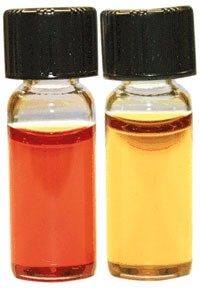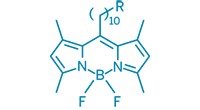Advertisement
Grab your lab coat. Let's get started
Welcome!
Welcome!
Create an account below to get 6 C&EN articles per month, receive newsletters and more - all free.
It seems this is your first time logging in online. Please enter the following information to continue.
As an ACS member you automatically get access to this site. All we need is few more details to create your reading experience.
Not you? Sign in with a different account.
Not you? Sign in with a different account.
ERROR 1
ERROR 1
ERROR 2
ERROR 2
ERROR 2
ERROR 2
ERROR 2
Password and Confirm password must match.
If you have an ACS member number, please enter it here so we can link this account to your membership. (optional)
ERROR 2
ACS values your privacy. By submitting your information, you are gaining access to C&EN and subscribing to our weekly newsletter. We use the information you provide to make your reading experience better, and we will never sell your data to third party members.
Analytical Chemistry
Sensitive, Selective Mercury Sensor
Nanoparticle-based colorimetric method detects part-per-billion levels of mercury
by Mitch Jacoby
May 7, 2007
| A version of this story appeared in
Volume 85, Issue 19

A new colorimetric method provides a simple and sensitive way to detect mercury in aqueous samples. The advance may form the basis of an instrument-free procedure for monitoring mercury levels in lakes and rivers and may lead to similar types of detection methods for other metals.
A variety of harmful effects in humans, from brain damage to DNA alteration, are attributed to mercury exposure. In addition to direct exposure to the metal's poisonous vapors, indirect exposure caused by eating mercury-tainted fish and other water-derived foods has also been fingered as a common route to the metal's toxic effects. Accordingly, a number of procedures have been developed to monitor the heavy metal and its compounds in various settings.
Colorimetric methods are especially convenient because analytes can be detected with the naked eye by observing color changes in reagent solutions. Some colorimetric methods for detecting mercury are available. but they are limited to micromolar concentration levels. They are also nonselective and don't work in aqueous environments.
The new colorimetric method, demonstrated by researchers at Northwestern University, detects Hg2+ ions at concentrations as low as 100 nM (20 ppb) in aqueous samples. Based on DNA-functionalized gold nanoparticles, the procedure is highly selective and, unlike other Hg2+ detection methods, does not require organic solvents or cosolvents (Angew. Chem. Int. Ed., DOI: 10.1002/anie.200700269).

The basis of the method, which was developed by chemistry professor Chad A. Mirkin, graduate student Jae-Seung Lee, and postdoc Min Su Han, is thymidine—Hg2+–thymidine coordination chemistry. To turn that coordination reaction into a chemical sensing method, the team functionalized gold nanoparticles with one of two types of thiolated DNA sequences, A and B. The sequences are complementary except for a single thymidine-thymidine mismatch.
In the absence of Hg2+ ions, A- and B-functionalized nanoparticles aggregate and form duplexes—despite the single mismatch—that melt (dissociate) at 46 ??C. The researchers note that the melting gives rise to a dramatic purple-to-red color change. The presence of Hg2+ ions, however, strengthens the complexes and raises their melting temperature and hence the temperature at which the color of the solution changes. These effects are mediated by Hg2+ coordinating the pair of mismatched thymidine groups.
The team showed that the melting temperature and color change depend linearly on the Hg2+concentration from the high nanomolar to low micromolar range. They also showed that the method is selective for Hg2+ and insensitive to Mg2+, Pb2+, Cd2+, Co2+, Zn2+, Ni2+, and other metal ions.
The researchers note that, in principle, the new method could be used to detect other metal ions by substituting thymidine with artificial nucleobases that selectively bind other metal ions.
Yi Lu, a chemistry professor at the University of Illinois, Urbana-Champaign, remarks that compared with other mercury detection techniques, the Mirkin group's "impressive" method stands out due to its high sensitivity, compatibility with aqueous media, and high selectivity.




Join the conversation
Contact the reporter
Submit a Letter to the Editor for publication
Engage with us on Twitter